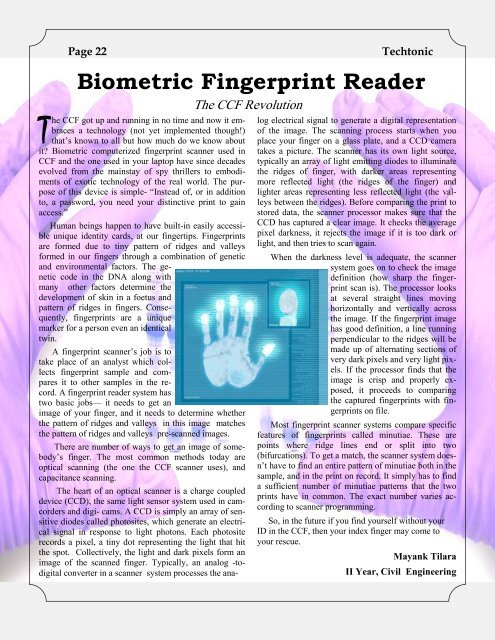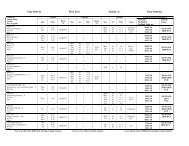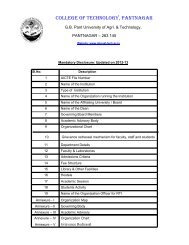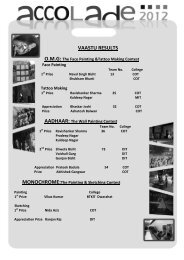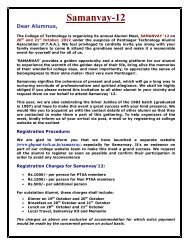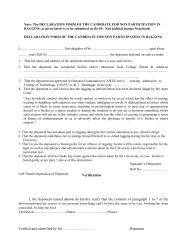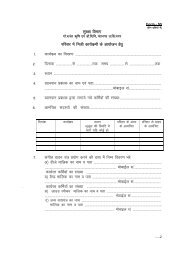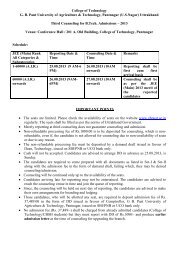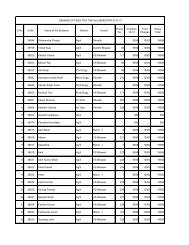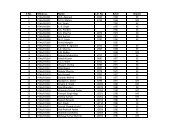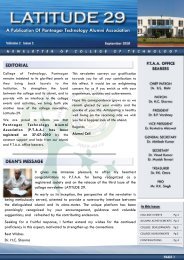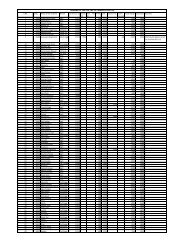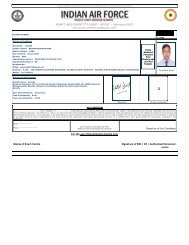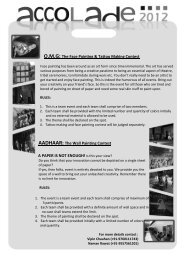Techniche 5th issue (Read-Only) - College of Technology, Pantnagar
Techniche 5th issue (Read-Only) - College of Technology, Pantnagar
Techniche 5th issue (Read-Only) - College of Technology, Pantnagar
Create successful ePaper yourself
Turn your PDF publications into a flip-book with our unique Google optimized e-Paper software.
Page 22<br />
Techtonic<br />
Biometric Fingerprint <strong>Read</strong>er<br />
T<br />
he CCF got up and running in no time and now it embraces<br />
a technology (not yet implemented though!)<br />
that’s known to all but how much do we know about<br />
it? Biometric computerized fingerprint scanner used in<br />
CCF and the one used in your laptop have since decades<br />
evolved from the mainstay <strong>of</strong> spy thrillers to embodiments<br />
<strong>of</strong> exotic technology <strong>of</strong> the real world. The purpose<br />
<strong>of</strong> this device is simple- “Instead <strong>of</strong>, or in addition<br />
to, a password, you need your distinctive print to gain<br />
access.”<br />
Human beings happen to have built-in easily accessible<br />
unique identity cards, at our fingertips. Fingerprints<br />
are formed due to tiny pattern <strong>of</strong> ridges and valleys<br />
formed in our fingers through a combination <strong>of</strong> genetic<br />
and environmental factors. The genetic<br />
code in the DNA along with<br />
many other factors determine the<br />
development <strong>of</strong> skin in a foetus and<br />
pattern <strong>of</strong> ridges in fingers. Consequently,<br />
fingerprints are a unique<br />
marker for a person even an identical<br />
twin.<br />
A fingerprint scanner’s job is to<br />
take place <strong>of</strong> an analyst which collects<br />
fingerprint sample and compares<br />
it to other samples in the record.<br />
A fingerprint reader system has<br />
two basic jobs— it needs to get an<br />
image <strong>of</strong> your finger, and it needs to determine whether<br />
the pattern <strong>of</strong> ridges and valleys in this image matches<br />
the pattern <strong>of</strong> ridges and valleys pre-scanned images.<br />
There are number <strong>of</strong> ways to get an image <strong>of</strong> somebody’s<br />
finger. The most common methods today are<br />
optical scanning (the one the CCF scanner uses), and<br />
capacitance scanning.<br />
The heart <strong>of</strong> an optical scanner is a charge coupled<br />
device (CCD), the same light sensor system used in camcorders<br />
and digi- cams. A CCD is simply an array <strong>of</strong> sensitive<br />
diodes called photosites, which generate an electrical<br />
signal in response to light photons. Each photosite<br />
records a pixel, a tiny dot representing the light that hit<br />
the spot. Collectively, the light and dark pixels form an<br />
image <strong>of</strong> the scanned finger. Typically, an analog -todigital<br />
converter in a scanner system processes the ana-<br />
The CCF Revolution<br />
log electrical signal to generate a digital representation<br />
<strong>of</strong> the image. The scanning process starts when you<br />
place your finger on a glass plate, and a CCD camera<br />
takes a picture. The scanner has its own light source,<br />
typically an array <strong>of</strong> light emitting diodes to illuminate<br />
the ridges <strong>of</strong> finger, with darker areas representing<br />
more reflected light (the ridges <strong>of</strong> the finger) and<br />
lighter areas representing less reflected light (the valleys<br />
between the ridges). Before comparing the print to<br />
stored data, the scanner processor makes sure that the<br />
CCD has captured a clear image. It checks the average<br />
pixel darkness, it rejects the image if it is too dark or<br />
light, and then tries to scan again.<br />
When the darkness level is adequate, the scanner<br />
system goes on to check the image<br />
definition (how sharp the fingerprint<br />
scan is). The processor looks<br />
at several straight lines moving<br />
horizontally and vertically across<br />
the image. If the fingerprint image<br />
has good definition, a line running<br />
perpendicular to the ridges will be<br />
made up <strong>of</strong> alternating sections <strong>of</strong><br />
very dark pixels and very light pixels.<br />
If the processor finds that the<br />
image is crisp and properly exposed,<br />
it proceeds to comparing<br />
the captured fingerprints with fingerprints<br />
on file.<br />
Most fingerprint scanner systems compare specific<br />
features <strong>of</strong> fingerprints called minutiae. These are<br />
points where ridge lines end or split into two<br />
(bifurcations). To get a match, the scanner system doesn’t<br />
have to find an entire pattern <strong>of</strong> minutiae both in the<br />
sample, and in the print on record. It simply has to find<br />
a sufficient number <strong>of</strong> minutiae patterns that the two<br />
prints have in common. The exact number varies according<br />
to scanner programming.<br />
So, in the future if you find yourself without your<br />
ID in the CCF, then your index finger may come to<br />
your rescue.<br />
Mayank Tilara<br />
II Year, Civil Engineering


